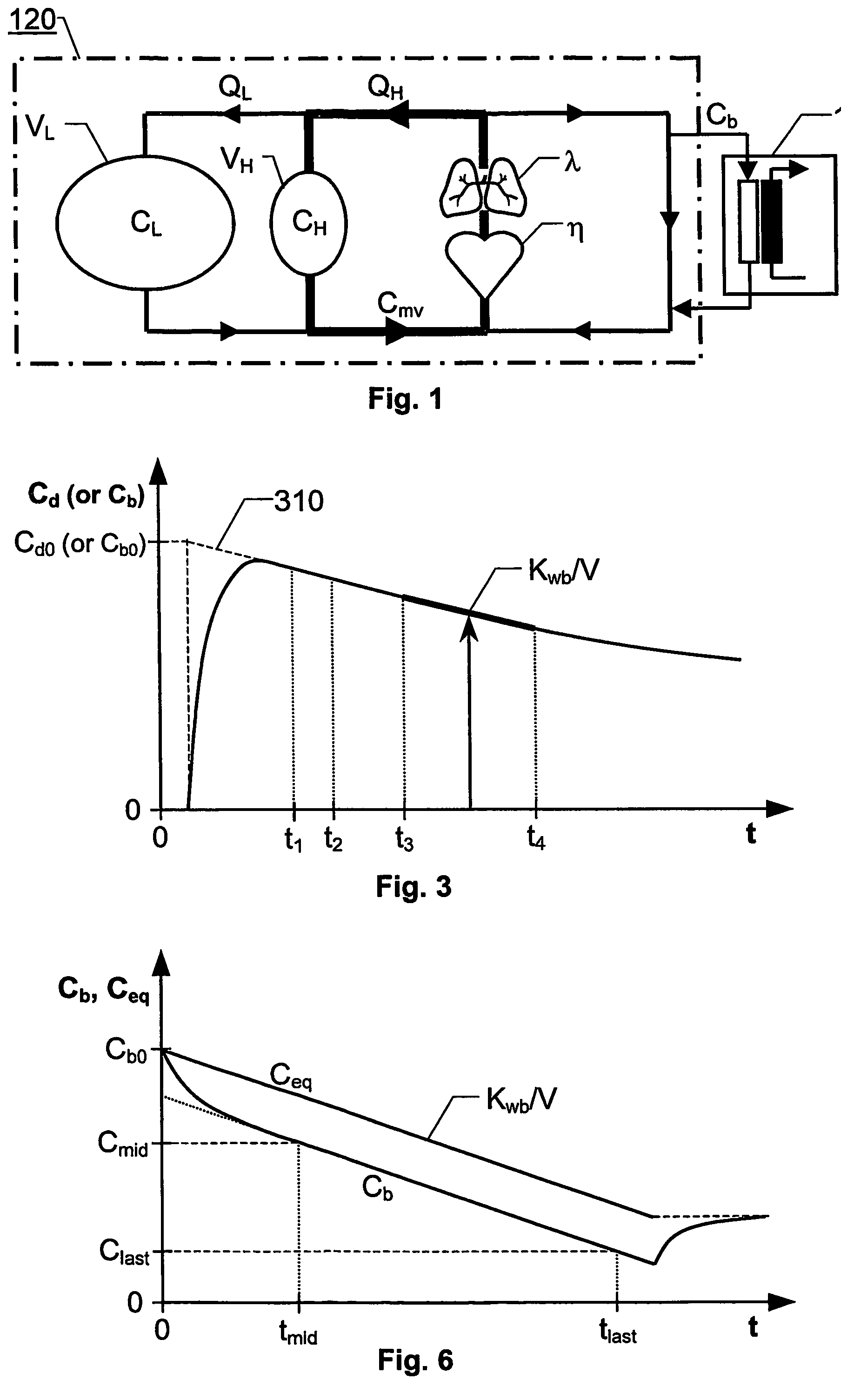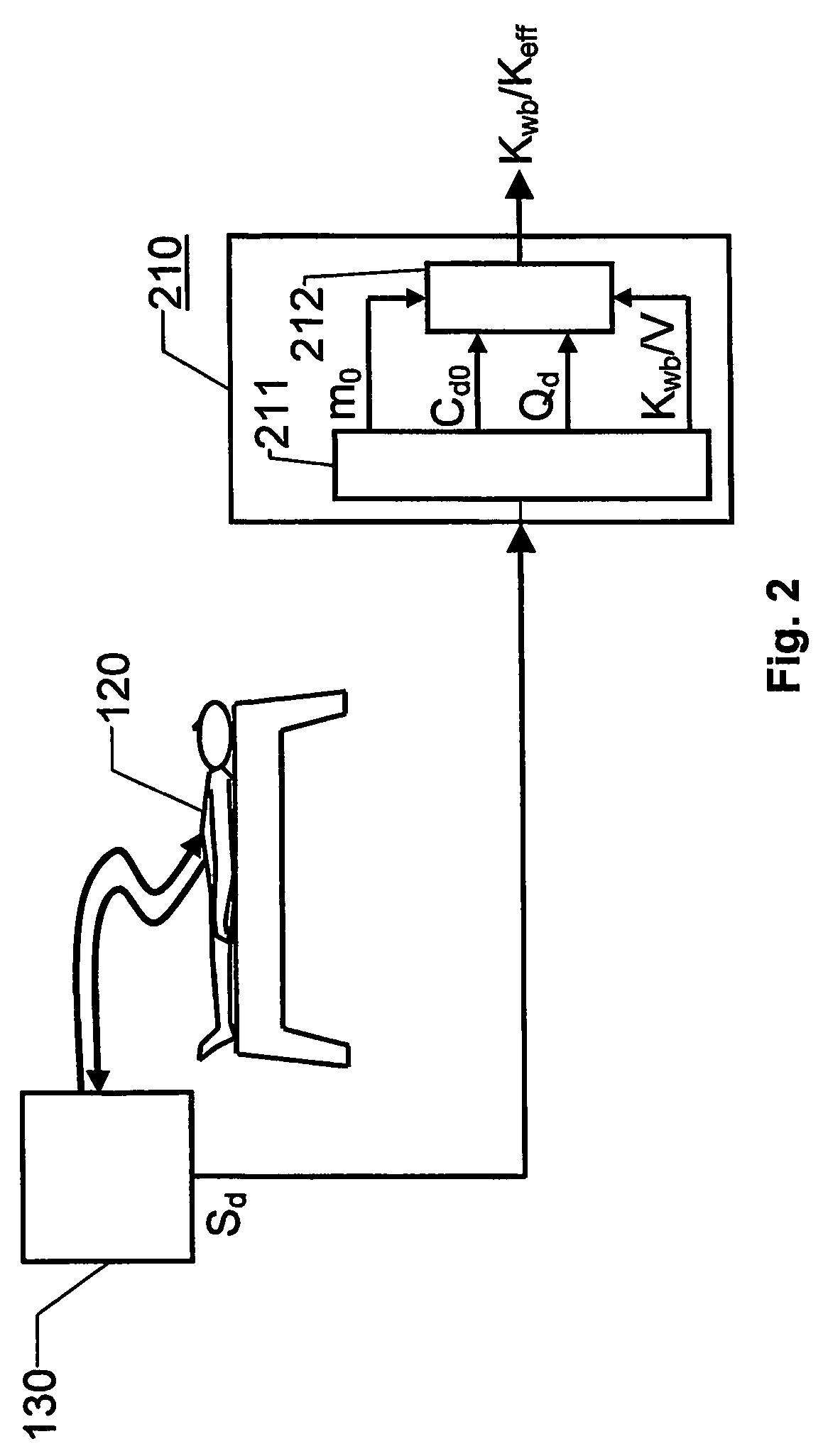Method and an apparatus for determining the efficiency of dialysis
a dialysis efficiency and apparatus technology, applied in the field of dialysis clearance, can solve the problem of difficult to determine the specific benefit of the dialysis process, and achieve the effect of improving the result of the dialysis, prolonging treatment time, and low ratio
- Summary
- Abstract
- Description
- Claims
- Application Information
AI Technical Summary
Benefits of technology
Problems solved by technology
Method used
Image
Examples
Embodiment Construction
[0040]Returning now to the FIG. 1, in contrast to Daugirdas and Schneditz, the invention presumes that the pool volumes VL and VH are constant. Thus, no ultrafiltration is presumed to take place, and the generation of urea is neglected. This means that it is possible to set up one differential equation for the ratio between the two pool concentrations CL and CH. Moreover, it can be shown that the ratio between the two pool concentrations CL and CH tends towards a constant. This in turn, means that the clearance ratio: “whole body clearance”-to-“effective clearance” Kwb / Keff (which equals the ratio: “mixed venous concentration”-to-“equilibrated concentration” Cmv / Ceq) also tends towards a constant. The factors which determine the steady state ratios are the fraction of the large pool volume VL to the entire blood volume V=VL+VH, the fraction of the blood flow QL in the large pool to the total systemic blood flow Q, and the fraction of the effective clearance Keff to the total systemi...
PUM
| Property | Measurement | Unit |
|---|---|---|
| time | aaaaa | aaaaa |
| concentration | aaaaa | aaaaa |
| flow rate | aaaaa | aaaaa |
Abstract
Description
Claims
Application Information
 Login to View More
Login to View More - R&D
- Intellectual Property
- Life Sciences
- Materials
- Tech Scout
- Unparalleled Data Quality
- Higher Quality Content
- 60% Fewer Hallucinations
Browse by: Latest US Patents, China's latest patents, Technical Efficacy Thesaurus, Application Domain, Technology Topic, Popular Technical Reports.
© 2025 PatSnap. All rights reserved.Legal|Privacy policy|Modern Slavery Act Transparency Statement|Sitemap|About US| Contact US: help@patsnap.com



